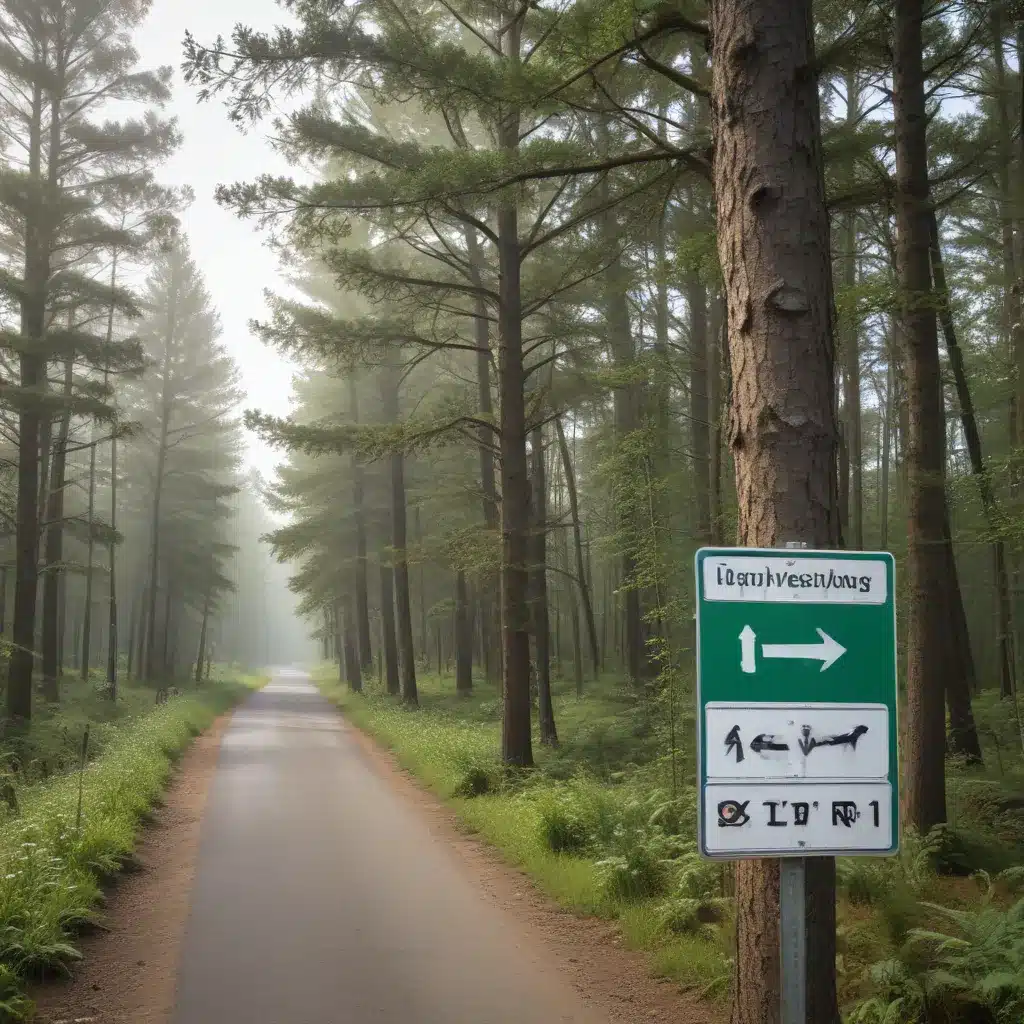Signage Systems
Now, this might seem counterintuitive when managing forest ecosystems…
Effective signage is essential for guiding forestry professionals and the public safely through the complex network of forest access roads. We learned this the hard way when dealing with challenging terrain during harvests… A well-designed signage system can provide clear direction, identify hazards, and communicate important information to all road users.
Types of Signage: When planning signage for forest access roads, consider using a variety of sign types, such as:
– Directional signs to indicate turns, distances, and destinations
– Regulatory signs to communicate speed limits, weight restrictions, and access permissions
– Warning signs to alert drivers of upcoming curves, slopes, wildlife crossings, or other hazards
– Information signs to highlight points of interest, amenities, and emergency contacts
Signage Design Principles: Signage should be visually clear, concise, and easily legible, even at higher travelling speeds. Use a consistent font, size, and color scheme throughout the network. Retroreflective materials can improve visibility in low-light conditions. double-check that that sign placement provides adequate reaction time for drivers to comprehend the information.
Signage Placement and Visibility: Position signs so they are clearly visible from an appropriate distance. Avoid obstructions such as vegetation, terrain features, or other signs. Strategically locate signs at decision points, intersections, and other key locations where drivers need guidance. Consider supplementary signage on both sides of the road for improved legibility.
Wayfinding Strategies
In addition to standard regulatory and warning signs, implementing robust wayfinding can significantly enhance navigation through forest access road networks.
Directional Signage: Use clear, consistent directional signage to indicate turns, distances, and destinations. Incorporate mileage or travel time information to help drivers plan their routes. Consider including signs for major landmarks, recreation areas, and emergency services.
Landmarks and Orientation Cues: Identify prominent natural or man-made features that can serve as visual orientation points. Leverage these landmarks in wayfinding signage to aid driver recognition and comprehension. Consistent mile markers or kilometer posts can also help drivers track their progress.
Mapping and Information Kiosks: Provide detailed maps at major access points and intersections, showing the overall road network, key destinations, and safety information. Incorporate QR codes or web links to digital maps and trip planning resources. Strategically placed information kiosks can give drivers an overview of the area and highlight points of interest.
Traffic Management Systems
Integrating intelligent traffic management systems can greatly improve safety and efficiency on forest access roads. These advanced systems leverage technology to monitor, control, and respond to changing conditions.
Speed Control Measures: Implement variable speed limit signs, dynamic curve warning systems, and speed feedback displays to encourage drivers to adjust their speeds based on environmental factors and road conditions. This can help mitigate risks associated with excessive speed.
Vehicle Detection and Monitoring: Use sensors, cameras, and other technologies to detect and track vehicle movements, monitor traffic flow, and identify potential issues. This data can inform traffic control measures, incident response, and long-term infrastructure planning.
Incident Response and Reporting: Equip forest access roads with emergency call boxes, remote monitoring capabilities, and incident reporting systems. This allows for rapid detection and coordination of emergency response, improving safety and resilience.
Navigation Improvement
Enhancing the user experience for all road users, including pedestrians, cyclists, and forestry equipment operators, is crucial for improving navigation and safety.
Accessibility and Inclusivity: double-check that that signage, wayfinding, and traffic management systems are designed to be accessible and inclusive. This may include using large, high-contrast text, providing multilingual information, and incorporating features for users with disabilities.
Pedestrian and Cyclist Needs: Consider the unique needs of non-motorized road users by providing dedicated paths, crossings, and safety features. Integrate signage and wayfinding that caters to the perspective and travel patterns of pedestrians and cyclists.
Multimodal Integration: Seamlessly integrate forest access roads with other transportation networks, such as public roads, hiking trails, and recreational corridors. Coordinate signage, wayfinding, and traffic management to facilitate smooth transitions between modes of travel.
System Integration
Leveraging data-driven technologies can optimize the performance and long-term sustainability of forest access road networks.
Data Collection and Analysis: Deploy sensor technologies, such as traffic counters, speed detectors, and vehicle classification systems, to gather comprehensive data on road usage, travel patterns, and safety trends. Analyze this information to inform infrastructure improvements, maintenance priorities, and resource allocation.
Data Visualization and Reporting: Present the collected data in clear, intuitive dashboards and reports. This can help forestry professionals, transportation planners, and policymakers make informed decisions about access road management and investment.
Maintenance and Optimization: Establish regular inspection and monitoring protocols to identify and address signage, infrastructure, or operational issues. Implement adaptive traffic control systems that can respond dynamically to changing conditions, enhancing the overall efficiency and resilience of the network.
Policy and Governance
Effective forest access road management requires a comprehensive policy framework and collaborative governance approach.
Regulatory Frameworks: double-check that that signage, wayfinding, and traffic management systems comply with relevant environmental regulations, transportation standards, and safety guidelines. Stay informed of any updates or changes to these regulations to maintain compliant and effective systems.
Stakeholder Collaboration: Foster open communication and collaboration among forestry professionals, transportation authorities, emergency services, and local communities. This can help align priorities, share knowledge, and develop integrated solutions for forest access road networks.
Community Engagement: Engage with the public, including recreational users and nearby residents, to understand their needs and concerns. Incorporate their feedback into the design and implementation of signage, wayfinding, and traffic management systems to promote acceptance and responsible use of forest access roads.
By integrating these advanced signage, wayfinding, and traffic management strategies, forest access road networks can become safer, more efficient, and better aligned with the diverse needs of all road users. For more information on sustainable forestry practices and woodland management, visit ForestryContracting.co.uk.
Example: Mixed-Species Reforestation Project 2023


